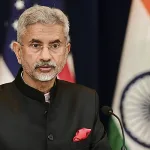The COVID-19 pandemic sent shockwaves across global economies, with India being no exception. Its impact on the Indian economy was dynamic, stretching across sectors such as health, education, and tourism. The unanticipated lockdown, travel restrictions, and border closures created significant disruptions, exposing vulnerabilities and emphasizing the need for resilience. Among the many sectors that bore the brunt, the Indian banking industry, which serves as the cornerstone of economic activities, underwent crucial transformations. Studying its trajectory post-pandemic provides insight not only into its adaptability but also into the macroeconomic policies required to withstand such crises.
COVID-19 was the biggest test for the Indian banking sector as it exacerbated pre-existing challenges. The sector was already burdened with substantial bad loans, and the pandemic further pushed businesses out of the market, leaving people without jobs. Loan defaults surged as economic activity came to a standstill, causing borrowers to struggle with debt repayment. The crisis also intensified asymmetry in credit markets, where borrowers were more aware of their financial standing than lenders. Banks, dealing with adverse selection, became increasingly cautious, leading to credit rationing. Meanwhile, informal money markets attempted to fill the gap but at exorbitant interest rates.
The Reserve Bank of India had projected that banks’ bad loans would double to 14.8% by September 2021 from 7.5% a year earlier, despite the easing of COVID-19 restrictions and signs of economic recovery. Many experts warned that non-performing assets (NPAs) would continue to rise and that short-term policy interventions merely masked the deeper impact of the crisis. Measures introduced by the RBI included a moratorium on term loan repayments, allowing a six-month deferral of installments to ease financial stress. Additionally, the central bank permitted a three-month deferral on interest payments for working capital loans. Other steps included reducing the cash reserve ratio to 3% and raising banks’ borrowing limits. The repo rate was slashed to 4.4% from 5.15%, while the reverse repo rate was cut by 0.90%.
While these measures provided temporary relief, they merely delayed the inevitable rise in NPAs. As the economy moved forward, the extent of the problem became evident, with banks requiring aggressive recapitalization from the government. Fitch Ratings had projected that Indian banks would need at least $58 billion for recapitalization. Even before the pandemic, lenders were grappling with $200 billion in bad debt, and Indian banks had one of the world’s highest bad loan ratios, at 6.54% in 2021. The severity of the situation was demonstrated when Yes Bank, India’s fourth-largest private lender, had to be rescued by the government-owned State Bank of India to prevent bankruptcy. The distress caused by the pandemic significantly reduced banks’ lending power, leading to a credit squeeze that hindered economic recovery. This forced banks to shift towards revenue streams that were more commission-based rather than credit-driven.
A report by the Reserve Bank of India suggested that it would take at least 12 years for the Indian economy to recover from the pandemic-induced losses. This recovery would require a minimum GDP growth rate of 7.2% for FY 2022-23 and 7.5% thereafter, allowing India to fully rebound by FY 2034-35. However, economic recovery was further challenged by external factors such as the Russia-Ukraine conflict, which significantly affected supply chains, fuel prices, and global trade. Additionally, recent concerns over the banking crises in some Western economies, such as the collapse of Silicon Valley Bank (SVB) and Credit Suisse’s acquisition by UBS, have raised questions about the resilience of financial systems globally, including in India.
Despite early concerns, the financial year 2023-24 presented a more optimistic scenario, particularly for the banking sector. Banks reported record profits, stock prices rose, and there was renewed confidence in the industry. Several factors contributed to this resilience, including a rise in interest rates due to the RBI’s stringent monetary policy, increased credit demand from MSMEs, and a broader economic recovery. Inflation trends also played a crucial role. According to the International Monetary Fund, inflation was expected to decline from 6.8% in 2022 to 5% in 2023 and 4% in 2024. The RBI, keeping these figures in mind, faced a key policy dilemma: whether to ease monetary tightening or maintain higher interest rates until inflation reached the 4% target.
Further, the banking sector is experiencing a surge in digital lending, driven by the increased adoption of AI-based risk management models. Banks are leveraging machine learning algorithms to assess borrower profiles in real time, allowing for quicker loan disbursement. This transformation is particularly evident in microfinance institutions that cater to underserved populations, where digital lending has bridged the gap between traditional financial institutions and small borrowers. Fintech firms have also gained prominence, partnering with established banks to provide seamless credit access. Government initiatives promoting digital banking, such as India’s Digital Public Infrastructure (DPI), are further strengthening this transition.
Another crucial factor shaping the banking sector’s performance is RBI’s evolving monetary policy. As of March 2024, the RBI has maintained the repo rate at 6.5%, balancing inflation control with economic growth. This has implications for lending, as high interest rates make borrowing costlier for businesses, thereby influencing credit demand. Credit growth was particularly impressive in the first half of 2023, reaching 18%, but moderated to 12% by the last quarter, averaging 15%—the highest in a decade. This growth was largely driven by MSMEs, which saw a 16% increase in credit demand, primarily due to government-backed schemes introduced during the pandemic. However, recent trends indicate a slowdown in credit growth due to rising interest rates.
MSMEs remain a key driver of economic recovery, contributing over 90% of all businesses, 50% of GDP, and 70% of total employment in India. While government schemes such as the Emergency Credit Line Guarantee Scheme (ECLGS) provided relief, there is uncertainty regarding their extension. Given MSMEs’ role in economic stability, it is crucial that policies continue to support their access to affordable credit. The government’s decision to extend ECLGS until March 2024 is a positive step, but sustained policy interventions will be necessary to maintain credit flow. Additionally, the Union Budget 2024-25 has introduced fresh incentives, including tax relief and low-interest loan schemes, to further support MSMEs in their recovery phase.
Despite strong profitability, structural issues persist in India’s banking sector. The HDFC Bank digital outages in 2024 exposed vulnerabilities in banking infrastructure, raising concerns over IT failures and cybersecurity risks. The RBI’s regulatory crackdown on Paytm Payments Bank signals a tighter stance on digital banking, affecting fintech players that rely on regulatory flexibility. Another emerging concern is the sharp rise in retail loans, particularly in personal and credit card segments, leading to fears of unsustainable household debt accumulation. If left unchecked, this trend could mirror the subprime lending crisis witnessed in Western economies.
A significant aspect of post-pandemic recovery has been the rapid digital transformation in banking. The adoption of UPI, digital lending platforms, and AI-driven banking services accelerated significantly. The surge in UPI transactions, which crossed Rs 18 lakh crore in January 2024, indicates a shift toward cashless transactions. The banking sector has also embraced AI-based credit risk assessment models and blockchain for secure transactions. The Reserve Bank of India is now experimenting with a Central Bank Digital Currency (CBDC) as part of a global trend toward digital finance, which could redefine banking operations in the coming years.
Another crucial development in the Indian banking sector is the rising emphasis on green banking and sustainability. Banks are now offering Green Bonds to support renewable energy projects and Environmental, Social, and Governance (ESG) financing. The RBI has encouraged banks to incorporate climate risk assessments in their lending models, ensuring that sustainability becomes a key part of financial decision-making. With India’s leadership in G20 discussions on climate finance, green banking is expected to shape future policy frameworks.
The broader global economic environment also poses challenges. Beyond the ongoing Russia-Ukraine conflict, geopolitical risks such as rising tensions in the Middle East and US Federal Reserve interest rate hikes are influencing capital flows and financial stability in India. These factors add complexity to the banking sector’s path forward, requiring careful navigation of both domestic and international risks. Moreover, the volatility in global oil prices and currency fluctuations add another layer of uncertainty for Indian banks that deal with large-scale international transactions.
Economically, COVID-19 was devastating, and the banking sector was no exception. While the post-pandemic period has seen a strong recovery in bank profitability, digital transformation, and credit growth, challenges remain due to global economic uncertainties and inflationary pressures. The World Bank has revised India’s GDP growth forecast for FY 2024-25 to 7%, citing strong private consumption and agricultural output. The IMF projects growth of 6.5% for2025, highlighting India’s resilience despite external risks.
As the financial landscape evolves, the future of India’s banking sector will depend on its ability to embrace digital transformation, sail through credit risks, and sustain economic momentum amidst inflationary pressures and global uncertainties.
(Author is Pursuing Bachelor’s at the University of Delhi and can be reached at [email protected])








